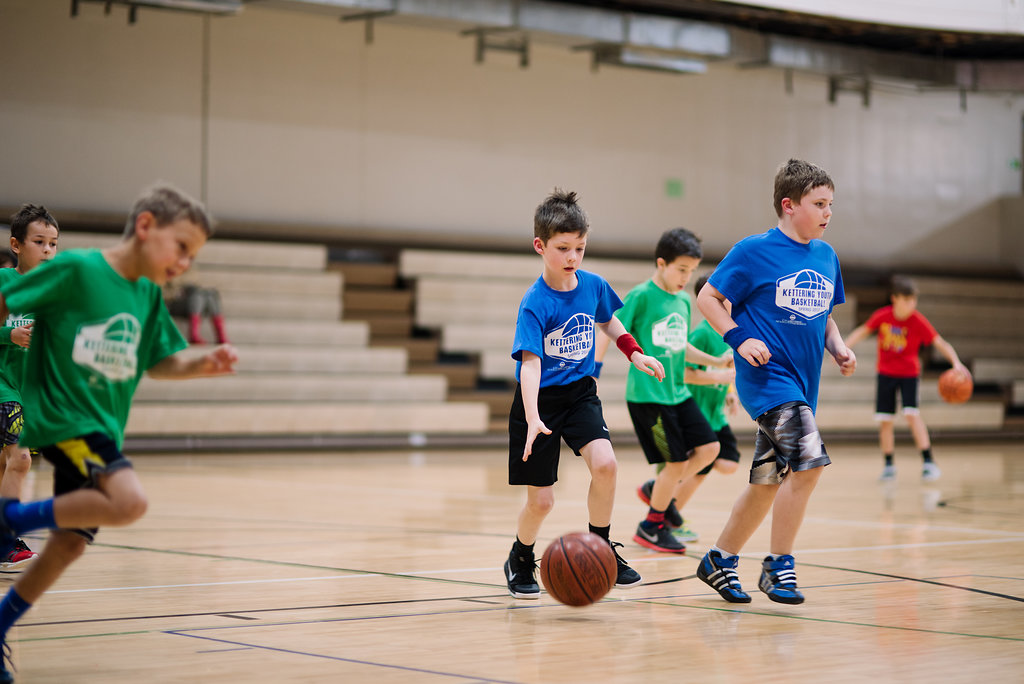Youth sports are a cornerstone of childhood for many, offering a blend of fun, fitness, and life lessons. But in recent years, the trend of early sport specialization—where kids focus on just one sport year-round—has raised concerns among experts. As a parent who’s watched my own kids juggle soccer balls, basketballs, and even the occasional taekwondo kick, I’ve seen firsthand the magic that happens when children play multiple sports. The benefits go far beyond the field, shaping their bodies, minds, and futures in ways that specialization simply can’t match. Let’s dive into why every kid should embrace a variety of sports, backed by research, real-life stories, and a sprinkle of humor to keep it light.
The Risks of Early Sport Specialization
Focusing on one sport too early can feel like putting all your eggs in one basket—except the basket’s a soccer ball, and it’s getting kicked around all year. Experts warn that early specialization, especially before age 15, increases the risk of overuse injuries and burnout. According to the American Academy of Pediatrics, kids who specialize early are more prone to injuries like stress fractures and ligament tears, with ACL injuries in children as young as 10 rising by 12% over the past decade.
Overuse Injuries: A Growing Concern
When kids repeat the same motions—like pitching in baseball or spiking in volleyball—their growing bodies take a beating. Repetitive stress on muscles, bones, and ligaments can lead to injuries that linger into adulthood. Playing multiple sports, however, allows kids to use different muscle groups, reducing strain and promoting balanced physical development.
Burnout and Dropping Out
Ever seen a kid who loved soccer suddenly refuse to lace up their cleats? That’s burnout, and it’s a real issue with single-sport athletes. Studies show that 80% of kids quit sports by age 15, often due to the pressure and monotony of year-round training in one activity. Mixing it up keeps sports fun and engaging, helping kids stay active longer.
Physical Benefits of Playing Multiple Sports
Playing multiple sports is like giving your body a full workout playlist instead of looping the same song. It promotes overall fitness, strengthens diverse muscle groups, and builds a foundation for lifelong health. Kids who diversify their sports are less likely to face obesity and more likely to develop coordination and endurance.
Building a Stronger, Healthier Body
- Improved Coordination: Switching between sports like basketball and swimming enhances hand-eye coordination and balance.
- Stronger Bones and Muscles: Varied movements, like running and jumping, support healthy bone growth and muscle development.
- Lower Risk of Chronic Diseases: Regular physical activity reduces the risk of heart disease, diabetes, and obesity later in life.
Preventing Injuries Through Cross-Training
Cross-training through multiple sports is like a cheat code for injury prevention. For example, a soccer player who also plays tennis develops lateral movement skills that strengthen their knees, reducing the risk of ACL tears. Research from UC Davis Health suggests kids who play multiple sports have fewer injuries than their single-sport peers.
Psychological and Social Benefits
Sports aren’t just about scoring goals; they’re about scoring life skills. Playing multiple sports helps kids build confidence, teamwork, and resilience—qualities that shine both on and off the field. I remember my daughter’s shy smile after her first basketball game, where she learned to high-five her teammates even after a loss. Those moments stick.
Boosting Confidence and Self-Esteem
Being part of different teams gives kids a chance to shine in varied roles, whether they’re the star pitcher or the supportive teammate in lacrosse. This builds self-esteem and teaches them to value their contributions, win or lose. Studies show team sports, in particular, reduce mental health challenges in kids ages 9–13.
Learning Teamwork and Leadership
- Cooperation: Kids learn to work together, compromise, and celebrate collective wins.
- Empathy: Losing gracefully and cheering for teammates fosters emotional intelligence.
- Leadership: Taking on roles like team captain builds confidence and decision-making skills.
Developing Grit for Life
A study from Ohio State University found that kids who play multiple sports develop “grit”—a mix of passion and perseverance that helps them tackle challenges as adults. Whether it’s pushing through a tough swim meet or rallying after a soccer loss, these experiences teach kids to keep going, no matter the odds.
Academic and Cognitive Advantages
Believe it or not, juggling sports can make kids better at juggling schoolwork. The discipline and focus learned on the field translate to the classroom, and physical activity keeps their minds sharp. My son, a multi-sport kid, swears his best study sessions happen after a good soccer practice—something about sweating it out clears his head.
Better Grades and Study Habits
High school athletes often need to maintain a certain GPA to stay on the team, which encourages good study habits. Research shows that kids who play sports tend to perform better academically, thanks to improved focus and problem-solving skills.
Sharper Minds Through Physical Activity
Physical activity boosts brain function, enhancing memory and critical thinking. A quick game of basketball or a swim session can help kids process information faster and stay alert during long study sessions.
Comparing Single-Sport vs. Multi-Sport Participation
Let’s break it down: single-sport specialization versus the multi-sport approach. Both have their merits, but the evidence leans heavily toward variety, especially for younger kids.
| Aspect | Single-Sport Specialization | Multi-Sport Participation |
|---|---|---|
| Physical Development | Focused skill-building but higher injury risk | Balanced muscle use, lower injury risk |
| Mental Health | Higher risk of burnout and stress | Reduced burnout, more fun |
| Skill Transferability | Limited to one sport’s techniques | Cross-sport skills enhance overall athleticism |
| Long-Term Success | May peak early but risk dropout | Builds grit, promotes lifelong activity |
| Social Benefits | Tight-knit team bonds but less variety | Diverse friendships across teams |
Pros and Cons of Multi-Sport Participation
Pros:
- Reduces overuse injuries by varying physical demands.
- Keeps sports fun, reducing burnout.
- Builds versatile athletic skills transferable across sports.
- Enhances social skills through diverse team dynamics.
Cons:
- Scheduling can be tricky for busy families.
- May delay mastery in a single sport.
- Higher costs for equipment and fees across multiple sports.
Where to Get Started with Multi-Sport Programs
Ready to get your kid involved? Local community centers, schools, and youth organizations offer a range of seasonal sports programs. Check out platforms like SportsEngine or TeamSnap to find leagues near you. Many schools also rotate sports by season—think soccer in fall, basketball in winter, and track in spring—making it easy to diversify.
Best Tools for Multi-Sport Families
- SportsEngine: A platform to find local sports programs and manage team schedules.
- TeamSnap: Great for coordinating practices and games across multiple sports.
- Local YMCA: Offers affordable, diverse sports programs for kids of all ages.
- School Athletic Programs: Often free or low-cost, with seasonal variety.
People Also Ask (PAA)
Here are answers to common Google questions about kids playing multiple sports:
What are the benefits of playing multiple sports?
Playing multiple sports reduces injury risk, prevents burnout, and builds versatile skills. Kids develop stronger bodies, better coordination, and life skills like teamwork and grit, all while keeping sports fun.
At what age should kids specialize in a sport?
Experts recommend delaying specialization until at least age 15 or 16 to minimize injuries and maximize long-term athletic success. Before then, variety is key.
How can parents encourage kids to try multiple sports?
Start by exposing them to different activities through camps or school programs. Let them choose what they enjoy, and keep the focus on fun, not competition.
Are there risks to playing multiple sports?
While the benefits outweigh the risks, challenges include scheduling conflicts and potential costs. Proper time management and communication with coaches can help.
A Personal Story: The Joy of Variety
When my daughter was 8, she was obsessed with soccer. She’d kick a ball around the backyard until dark, dreaming of being the next Mia Hamm. But when we signed her up for a summer swim team, something clicked. She loved the water, made new friends, and suddenly her soccer footwork got sharper—those swim strokes strengthened her core like nothing else. Watching her beam after a relay race, I realized that mixing sports didn’t just make her a better athlete; it made her a happier kid. That’s the power of variety.
FAQ: Common Questions About Kids and Multiple Sports
Q: How many sports should my kid play?
A: Two to three sports per year, rotated seasonally, is ideal for most kids. This balances variety with manageable schedules.
Q: Can playing multiple sports improve athletic performance?
A: Yes! Cross-training builds transferable skills, like agility and endurance, that enhance performance across sports.
Q: What if my kid only loves one sport?
A: Encourage them to try complementary activities, like swimming or track, to build supporting skills while keeping their favorite sport fun.
Q: How do I manage the costs of multiple sports?
A: Look for community programs or school teams, which are often more affordable. Second-hand gear and carpooling can also cut costs.
Q: Are there sports that pair well together?
A: Absolutely! Soccer and track improve speed, while basketball and volleyball enhance jumping and coordination. Mix sports with different physical demands for best results.
Wrapping It Up: The Multi-Sport Advantage
Playing multiple sports isn’t just about keeping kids active—it’s about setting them up for a healthier, happier future. From dodging injuries to building grit and friendships, the benefits are undeniable. So, next time your kid begs to stick with just one sport, consider nudging them toward a new adventure. Maybe they’ll discover a love for swimming or find their inner basketball star. Either way, they’ll grow in ways that go far beyond the scoreboard. For more tips on youth sports, check out HealthyChildren.org or your local YMCA’s website.









Leave a Reply